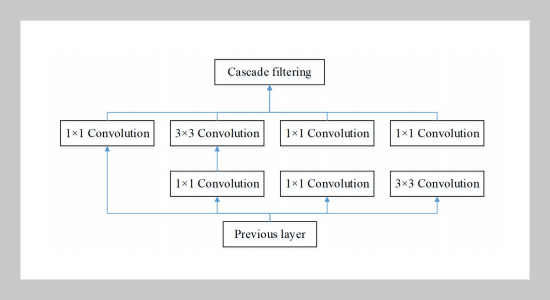REFERENCES
- [1] Jing Yu, Hang Li, Shou Lin Yin, Qingwu Shi, and Shahid Karim. Dynamic gesture recognition based on deep learning in human-to-computer interfaces. Journal of Applied Science and Engineering, 23(1):31–38, 2020.
- [2] Jiang Yongxiang, Duan Jingle, Deng Sanpeng, Qi Yuming, Wang Peng, Wang Zijing, and Zhang Tianjiang. Sitting posture recognition by body pressure distribution and airbag regulation strategy based on seat comfort evaluation. The Journal of Engineering, 2019(23):8910– 8914, 2019.
- [3] Rong Shue Hsiao, Tian Xiang Chen, Mekuanint Agegnehu Bitew, Chun Hao Kao, and Tzu Yu Li. Sleeping posture recognition using fuzzy c-means algorithm. BioMedical Engineering Online, 17, nov 2018.
- [4] Xiaowei Wang, Shoulin Yin, Ke Sun, Hang Li, Jie Liu, and Shahid Karim. GKFC-CNN : Modified Gaussian Kernel Fuzzy C-means and Convolutional Neural Network for Apple Segmentation and Recognition. Journal of Applied Science and Engineering, 23(3):555–561, 2020.
- [5] Shoulin Yin, Hang Li, Lin Teng, Man Jiang, and Shahid Karim. An optimised multi-scale fusion method for airport detection in large-scale optical remote sensing images. International Journal of Image and Data Fusion, 11(2):201–214, apr 2020.
- [6] Lin Teng, Hang Li, Shoulin Yin, Shahid Karim, and Yang Sun. An active contour model based on hybrid energy and fisher criterion for image segmentation, jan 2020.
- [7] Hong Zhang, Xuzhong Yan, and Heng Li. Ergonomic posture recognition using 3D view-invariant features from single ordinary camera. Automation in Construction, 94:1–10, 2018.
- [8] Liu Shuai. Player’s posture recognition algorithm based on multi- feature fusion. Information Technology, pages 7–10, 2019.
- [9] Zhenchuan Zhang, Yingchun Yang, Zhaohui Wu, and Qian Ma. A posture recognition system for rat cyborg automated navigation. Chinese Journal of Electronics, 27(4):687–693, jul 2018.
- [10] Xianbing Xu, Chengbin Peng, Jiangjian Xiao, Huimin Jing, and Xiaojie Wu. A fast positioning algorithm based on 3D posture recognition. In Lecture Notes in Computer Science (including subseries Lecture Notes in Artificial Intelligence and Lecture Notes in Bioinformatics), volume 11266 LNCS, pages 360–370. Springer Verlag, 2018.
- [11] Yunli Lee and Keechul Jung. Non-temporal multiple silhouettes in Hidden Markov Model for view independent posture recognition. In Proceedings - 2009 International Conference on Computer Engineering and Technology, ICCET 2009, volume 1, pages 466–470, 2009.
- [12] Linqing Feng and Xin Wang. Changes Correlation between Athletes’ Postures and Supporting Counterforce In-run Period in Freestyle Skiing Aerials. Journal of Shenyang Sport University, 2013.
- [13] F. Xie, G. Xu, Y. Cheng, and Y. Tian. Human body and posture recognition system based on an improved thinning algorithm. IET Image Processing, 5(5):420–428, aug 2011.
- [14] Dazi Li, Guifang Wang, Tianheng Song, and Qibing Jin. Improving convolutional neural network using accelerated proximal gradient method for epilepsy diagnosis. In 2016 UKACC International Conference on Control, UKACC Control 2016, 2016.
- [15] Jing Gao, Peng Li, and Zhikui Chen. A canonical polyadic deep convolutional computation model for big data feature learning in Internet of Things. Future Generation Computer Systems, 99:508–516, 2019.
- [16] Qingchen Zhang, Changchuan Bai, Laurence T. Yang, Zhikui Chen, Peng Li, and Hang Yu. A Unified Smart Chinese Medicine Framework for Healthcare and Medical Services. IEEE/ACM Transactions on Computational Biology and Bioinformatics, pages 1–1, 2019.
- [17] Peng Li, Zhikui Chen, Laurence Tianruo Yang, Qingchen Zhang, and M. Jamal Deen. Deep convolutional computation model for feature learning on big data in internet of things. IEEE Transactions on Industrial Informatics, 14(2):790–798, feb 2018.
- [18] Peng Li, Zhikui Chen, Laurence Tianruo Yang, Jing Gao, Qingchen Zhang, and M. Jamal Deen. An Incremental Deep Convolutional Computation Model for Feature Learning on Industrial Big Data. IEEE Transactions on Industrial Informatics, 15(3):1341–1349, 2019.
- [19] Bibhuti Bhusan Sahoo, Ramakar Jha, Anshuman Singh, and Deepak Kumar. Long short-term memory (LSTM) recurrent neural network for low-flow hydrological time series forecasting. Acta Geophysica, 67(5):1471–1481, oct 2019.
- [20] Qingchen Zhang, Changchuan Bai, Zhikui Chen, Peng Li, Hang Yu, Shuo Wang, and He Gao. Deep learning models for diagnosing spleen and stomach diseases in smart Chinese medicine with cloud computing. In Concurrency Computation, page e5252. John Wiley and Sons Ltd, apr 2019.
- [21] Chao Fang, Yi Shang, and Dong Xu. MUFOLD-SS: New deep inception-inside-inception networks for protein secondary structure prediction. Proteins: Structure, Function and Bioinformatics, 86(5):592–598, may 2018.
- [22] Jing Gao, Jianzhong Li, and Yingshu Li. Approximate event detection over multi-modal sensing data. Journal of Combinatorial Optimization, 32(4):1002–1016, nov 2016.
- [23] Peng Li, Zhikui Chen, Laurence T. Yang, Jing Gao, Qingchen Zhang, and M. Jamal Deen. An Improved Stacked Auto-Encoder for Network Traffic Flow Classification. IEEE Network, 32(6):22–27, 2018.
- [24] Lin Teng, Hang Li, and Shoulin Yin. Modified pyramid dual tree direction filter-based image denoising via curvature scale and nonlocal mean multigrade remnant filter. International Journal of Communication Systems, 31(16), nov 2018.
- [25] Shoulin Yin, Ye Zhang, and Shahid Karim. Large Scale Remote Sensing Image Segmentation Based on Fuzzy Region Competition and Gaussian Mixture Model. IEEE Access, 6:26069–26080, 2018.
- [26] Yuqian Kuang, Min Guo, Yali Peng, and Zhao Pei. Learner posture recognition via a fusing model based on improved SILTP and LDP. Multimedia Tools and Applications, 78(21):30443–30456, nov 2019.
- [27] Dawid Warchoł. Hand posture recognition using modified Ensemble Of Shape Functions And Global RadiusBased Surface Descriptor. Computer Science, 19(2):115– 137, 2018.
- [28] Yaqiang Yao, Yan Liu, Zhenyu Liu, and Huanhuan Chen. Human Activity Recognition with Posture Tendency Descriptors on Action Snippets. IEEE Transactions on Big Data, 4(4):530–541, 2018.
- [29] Yanmei Chai, Qing Wang, Jingping Jia, and Rongchun Zhao. A novel human gait recognition method by segmenting and extracting the region variance feature. In Proceedings - International Conference on Pattern Recognition, volume 4, pages 425–428, 2006.
















